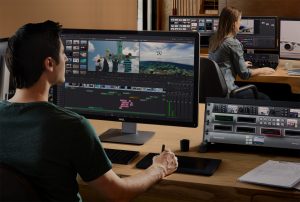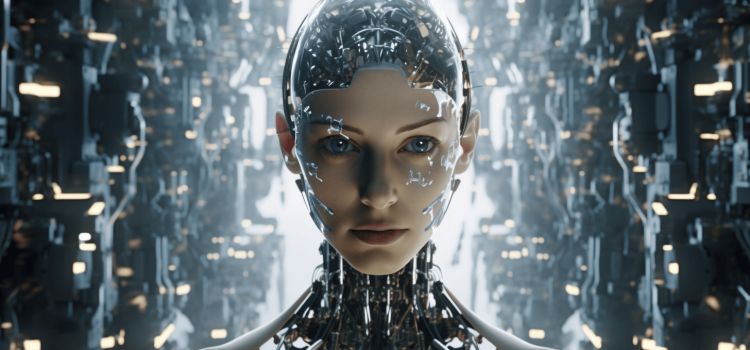
Introduction
The advent of Artificial Intelligence (AI) has ushered in a transformative era across various industries, and the film industry is no exception. One of the most significant areas of impact is in film editing and post-production. This article delves into how AI is revolutionizing these critical stages of filmmaking, providing an in-depth look at the technologies involved, their applications, and the implications for filmmakers and audiences alike.
The Evolution of Film Editing

-
Historical Context
Film editing has evolved significantly since the early days of cinema. Initially, editing was a manual, labor intensive process involving physical cutting and splicing of film reels. The advent of digital editing in the late 20th century revolutionized the industry, introducing software like Avid Media Composer and Adobe Premiere Pro, which made the process faster and more flexible.
-
The Digital Revolution
With the digital revolution, filmmakers gained unprecedented control over their work. Non-linear editing systems (NLEs) allowed editors to manipulate footage in ways that were previously unimaginable. However, despite these advancements, the process remained time-consuming and required a high level of skill and expertise.
Enter Artificial Intelligence

-
What is AI Film Editing?
AI film editing refers to the use of artificial intelligence technologies to automate and enhance various aspects of the film editing and post-production process. These technologies can analyze footage, suggest edits, and even create rough cuts, significantly reducing the time and effort required from human editors.
-
Key Technologies
-
Machine Learning
Machine learning algorithms can analyze vast amounts of data to identify patterns and make predictions. In film editing, these algorithms can be trained to recognize different types of shots, scenes, and transitions, enabling them to suggest edits that align with the director’s vision.
-
Natural Language Processing (NLP)
NLP technologies can analyze dialogue and scripts to understand the context and emotional tone of a scene. This can be particularly useful in editing dialogue-heavy scenes, ensuring that the pacing and flow of conversations are natural and engaging.
-
Computer Vision
Computer vision technologies can analyze visual elements within a frame, such as colors, lighting, and composition. This allows AI systems to make more informed decisions about how to edit a scene to achieve the desired visual impact.
Applications of AI in Film Editing

-
Automated Rough Cuts
One of the most time-consuming aspects of film editing is creating rough cuts. AI systems can analyze raw footage and automatically generate rough cuts based on predefined criteria, such as shot type, scene length, and narrative structure. This allows human editors to focus on refining the final cut rather than spending hours assembling initial versions.
-
Scene Detection and Classification
AI algorithms can automatically detect and classify different types of scenes, such as action sequences, dialogue scenes, and establishing shots. This can help editors quickly locate specific scenes and ensure that the pacing and structure of the film are consistent with the director’s vision.
-
Color Grading
Color grading is a critical aspect of post-production that involves adjusting the colors and tones of footage to achieve a specific look or mood. AI-powered color grading tools can analyze footage and suggest adjustments based on the desired aesthetic, significantly speeding up the process and ensuring a consistent look across the entire film.
-
Sound Editing
AI technologies can also be used to enhance sound editing. For example, machine learning algorithms can analyze dialogue tracks to identify and remove background noise, ensuring that the audio is clear and professional. Additionally, AI can be used to automate the process of syncing audio and video, saving editors valuable time.
Benefits of AI Film Editing

-
Increased Efficiency
One of the most significant benefits of AI film editing is increased efficiency. By automating time-consuming tasks, AI allows editors to focus on the creative aspects of their work, ultimately speeding up the post-production process and reducing costs.
-
Enhanced Creativity
AI tools can provide editors with new creative possibilities. For example, AI-powered editing software can suggest alternative cuts and transitions that the editor may not have considered, potentially leading to more innovative and engaging final products.
-
Consistency and Precision
AI technologies can ensure a high level of consistency and precision in film editing. For example, AI-powered color grading tools can apply the same adjustments across multiple scenes, ensuring a consistent look and feel. Similarly, AI algorithms can detect and correct errors that might be missed by human editors, such as continuity issues or audio sync problems.
Challenges and Limitations

-
Quality and Accuracy
While AI technologies have made significant advancements, they are not infallible. The quality and accuracy of AI-generated edits can vary depending on the complexity of the footage and the sophistication of the algorithms. Human oversight is still required to ensure that the final product meets the desired standards.
-
Ethical Considerations
The use of AI in film editing also raises ethical considerations. For example, AI algorithms can be biased based on the data they are trained on, potentially leading to biased or stereotypical representations in the final product. It is essential for filmmakers to be aware of these issues and take steps to mitigate them.
-
Job Displacement
The automation of film editing tasks raises concerns about job displacement. While AI can enhance the efficiency and creativity of the editing process, it also has the potential to reduce the demand for human editors. It is crucial for the industry to find a balance between leveraging AI technologies and preserving job opportunities for skilled professionals.
The Future of AI Film Editing

-
Continued Advancements
As AI technologies continue to evolve, we can expect to see even more sophisticated and capable editing tools. For example, future AI systems may be able to analyze footage in real-time, providing instant feedback and suggestions to editors. Additionally, advancements in AI-driven storytelling could enable the creation of entirely new forms of interactive and immersive films.
-
Collaboration Between Humans and AI
The future of film editing will likely involve a collaborative relationship between humans and AI. Rather than replacing human editors, AI technologies will serve as powerful tools that enhance their capabilities and enable them to achieve new levels of creativity and efficiency. By embracing this collaborative approach, filmmakers can leverage the strengths of both humans and machines to create compelling and innovative films.
Conclusion
The impact of AI on film editing and post-production is profound and far-reaching. From automated rough cuts to AI-powered color grading, these technologies are transforming the way films are created and edited. While there are challenges and limitations to consider, the potential benefits of AI film editing are immense. By embracing these technologies and finding a balance between automation and human creativity, the film industry can continue to push the boundaries of what is possible and create even more engaging and impactful films for audiences around the world.









